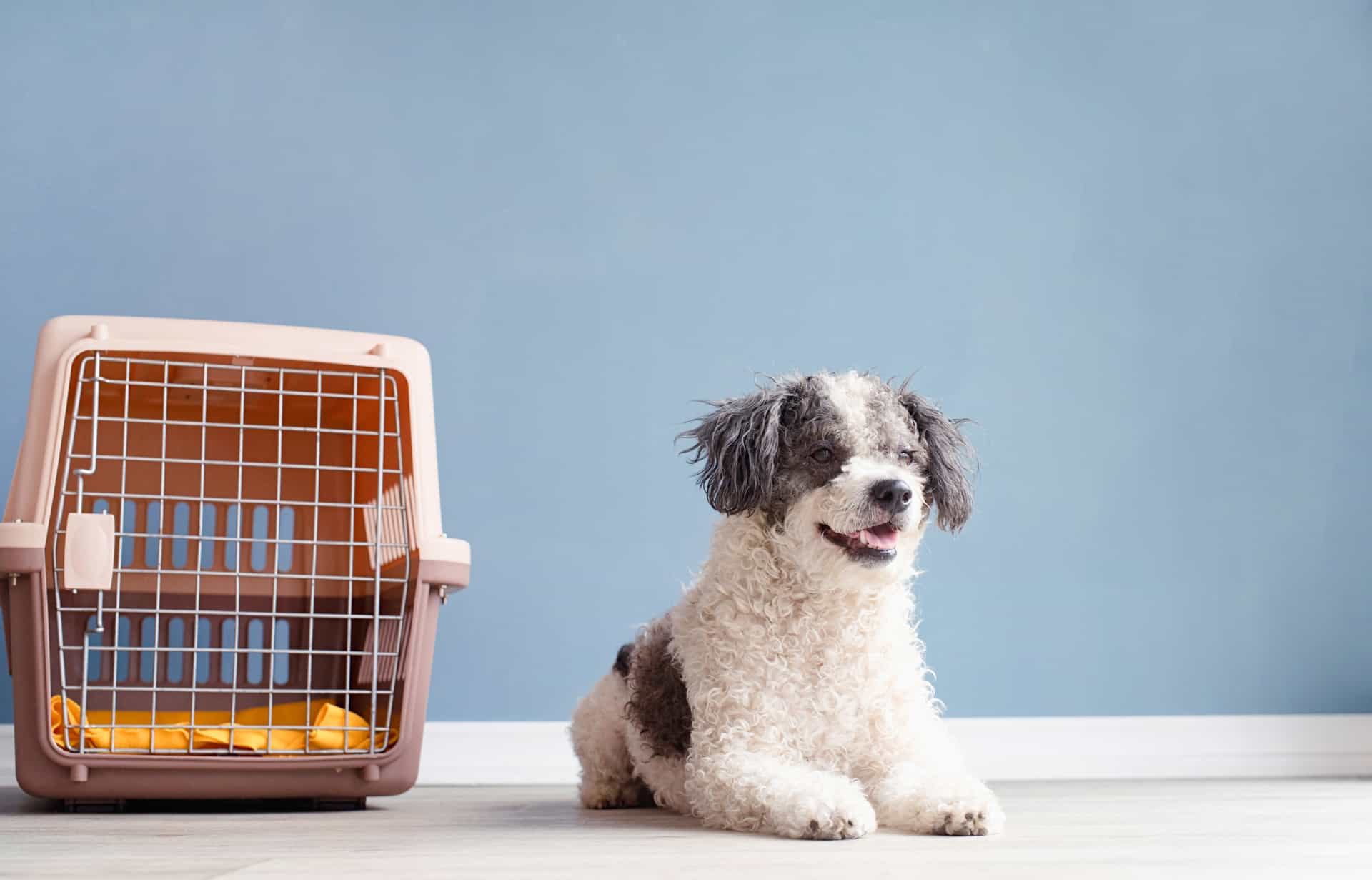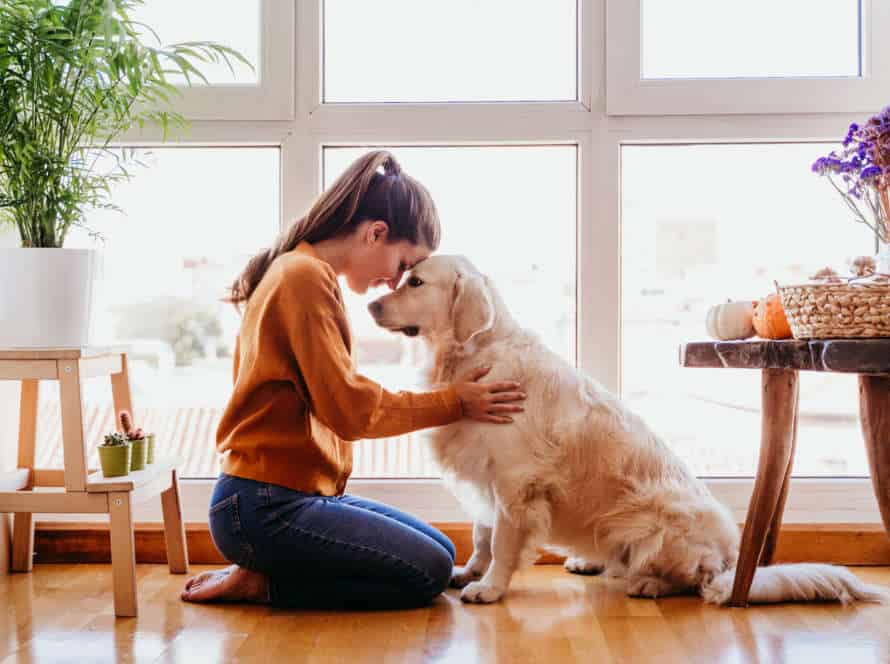Exploring the Benefits of Crate-Free Living
No-crate living provides a range of advantages for pet owners and their furry pals. By permitting your pet to live freely in your abode, you can enhance their quality of life and nurture a stronger relationship between you and your furry mate.
Advantages of no-crate living include:
- Better comfort and freedom for your pet, which reduces their stress and anxiety;
- Strengthened trust and bonding between you and your pet;
- Lower risk of physical harm that may occur when trying to escape from the crate;
- Improved house-training habits and less need for potty breaks.
Generally, no-crate living gives your pet a safe, pleasant and secure environment to thrive and feel loved.
Pro-tip: Make sure you pet-proof your home and set out clear guidelines and boundaries for your furry friend to obey.
Outline-
Outline:
- Introduction
- Describe crate-free living and what it includes.
- Benefits of Crate-Free Living
- Less anxiety and stress in dogs/puppies.
- Easier house training and bladder control.
- Better socialization and family bonding.
- Health benefits like fewer injuries and more mental stimulation.
- Tips for a Successful Transition to Crate-Free Living
- Gradual training and a safe, comfortable space.
- Conclusion
- Summarize the benefits of crate-free living.
- Encourage pet owners to consider it.
The Definition and Concept of Crate-Free Living
Crate-Free Living is a way of life that encourages lessening or getting rid of crates and other forms of confinement for animals. This type of living allows animals to move, communicate with humans and other animals, and do their natural activities. It also enables them to create social structures and form relationships. Let’s learn more about Crate-Free Living.
Understanding Crate-Training and its effects on Dogs
Crate training is a popular method for teaching dogs. A crate should be a place of comfort, not punishment. There are many advantages of crate training for both dogs and their owners.
The following are advantages of crate training:
- Safety & Security: It gives a dog a safe space when they need a break or when left alone.
- Housetraining: It helps them learn to control their bladder and bowels.
- Destructive Behaviors: It stops them from chewing or ruining the house when alone.
It’s important to note that crate training isn’t right for every dog. An alternate option is crate-free living which has its own benefits.
Crate-Free Living vs Crate-Training – What’s the Difference?
Crate-free living is a happy and healthy choice for pets. It lets them explore and interact with their environment, which is key for their well-being. Plus, it prevents behavioral issues caused by stress and anxiety.
Crate-training has its benefits too. It’s useful when travelling or visiting the vet, and it can help with potty-training and protecting pets from danger.
Still, crate-free living is the best lifestyle for pets. It gives them control and avoids physical and emotional harm.
Pro Tip: If you must crate-train, make sure it’s for the right reasons and with proper techniques to avoid distress.
The Benefits of Crate-Free Living for Dogs and Their Owners
Crate-free living for dogs is a concept that enables pups to live freely in a safe space, not confined to a crate for long amounts of time. The perks of this lifestyle can be huge for both pooches and their owners.
Here are some of the benefits:
- Improved physical health – Dogs living crate-free have more opportunities to get active, reducing the risk of obesity and other health problems.
- Less stress – Being in a crate for too long can lead to anxiety, whereas crate-free living gives them more freedom and limits negative behaviours caused by too much energy.
- A stronger bond with owners – Crate-free living increases interactions with people, encouraging more positive behaviours.
By having a crate-free life, dog owners can help their companions live happier, healthier and more satisfying lives.
Tips for Successfully Implementing Crate-Free Living
Crate-free living for cats is gaining popularity! Pet parents want a safe, comfy, and stimulating environment for their cats. Benefits include more freedom, more space to explore, extra stimulation, and more chances to bond. Here are some tips for a successful crate-free life!
Being Mindful of Your Dog’s Needs and Behaviors
It’s important to keep an eye on your pup’s needs and habits for a successful transition to crate-free living. This can give your four-legged buddy lots of advantages. Here’s some advice to keep in mind:
- Make a safe, cozy place for your doggy. A certain area of the house with its bed, toys, and bowl of water will do.
- Monitor your pup’s actions and adjust its environment if needed.
- Ensure your dog gets enough physical and mental activity. This will keep it busy and prevent any naughty behavior.
The benefits of going crate-free include reduced stress and anxiety levels, better socialization, and improved well-being. If you take note of your pup’s needs and activities, you can easily make the shift to crate-free living, giving your furry friend a happy and healthy life.
Gradually Introduce Your Dog to Crate-Free Living
Gradually transitioning to crate-free living is important for success and stress-free. Here are some tips:
- Start small, like a bathroom or gated area.
- Use positive reinforcement – reward with treats and praise.
- Increase the space gradually, while monitoring behavior.
- Consider anxiety – watch their body language.
Crate-free has many benefits. It:
- Reduces stress
- Promotes independence
- Strengthens bond
Consistency and Positive Reinforcement
Consistency and positive reinforcement are vital for successful crate-free living. This lets you reap the rewards of a content, stress-free pet. Here are some tips to help you:
- Be consistent with rules and training methods. This will help your pet understand what’s expected and reduce confusion and worry.
- Reward good behaviour with treats, compliments, and toys. Your pet will be keen to make you proud!
- Make your pet feel secure – provide cozy bedding, lots of toys, and a safe living environment.
- Be persistent; transitioning to crate-free living may take time.
Remember, the advantages of this lifestyle greatly outweigh the effort put in. A content, healthy pet means a happy owner.
Real-Life Success Stories of Crate-Free Living
Say goodbye to crates! Crate-free living is gaining traction with pet owners. Pets have access to their own space, when needed, within a home. This lifestyle has many perks, such as reducing stress and boosting socialization. Let’s hear some success stories to see how beneficial it can be.
The Positive Impact Crate-Free Living had on a Dog with Separation Anxiety
Crate-Free Living is a blessing for a pup with separation anxiety. It gives them a safe, calming atmosphere with no confinements.
Let’s take a look at its benefits:
- Anxiety and Stress Reduction: Crate-free living allows doggos to move freely. This reduces their stress levels and makes them feel comfortable.
- Improved Health: Crate confinement can be hazardous for a dog’s mental and physical health. But, with no confinement, dogs can stay healthy and happy.
- Destructive Behaviour Decreases: Separation anxiety can cause destructive behaviour like barking, chewing, and scratching. Crate-free living helps by providing a secure space for them to relax.
To sum up, crate-free living is a great way to help dogs with separation anxiety. It provides an environment that keeps them healthy, reduces stress, and lessens destructive behaviour.
The Joy of Crate-Free Living for a Formerly Abused Dog
Crate-free living can be a great experience for a formerly abused pup. Crates may be beneficial for training and safety, but there are many advantages to crate-free living too.
Take a look at a few real-life successes of crate-free living!
- Max was a rescued pooch who’d been through much distress. After lots of patience and love, Max learned to trust and now snoozes in a comfy bed next to his owner instead of a crate.
- Jordan was an anxious dog, barking and whining when put in a crate. Transitioning to a crate-free life decreased her anxiety and she became more relaxed in her home.
- Benny was a lively dog, getting restless and irritated in his crate. Since transitioning to a crate-free lifestyle, Benny has become calmer, more connected with his owners, and overall happier.
Crate-free living lets dogs have more freedom, less stress and anxiety, and better relationships with their owners. While crates can be practical in some cases, looking into a crate-free lifestyle may be worth it for the benefit of both you and your pup!
The Benefits of Crate-Free Living on a Dog’s Physical and Emotional Health.
No crate living can help a dog’s physical and emotional wellbeing. Many stories prove its worth.
No-crate living lets dogs move more, which helps them stay in shape. Otherwise, they could get weak muscles and joint stiffness. Also, their hygiene is better when not in a crate, as they can wait to go outside.
Emotionally, these pups are less stressed, more content, and have improved relationships with their owners. So, it’s vital for a healthy, happy pooch.
Many people back this up with stories of their own. They say their furry friends are happier, healthier, and more interactive since ditching the crate.
Frequently Asked Questions
1. What is crate-free living?
Crate-free living is a lifestyle choice that involves allowing your pets, usually dogs, to have freedom of movement and space to explore their surroundings without being confined to a crate or kennel.
2. Is crate-free living safe for my pet?
Yes, crate-free living is safe for your pet as long as you take the necessary precautions to ensure their safety. This includes puppy-proofing your home, providing them with appropriate exercise, and supervising them at all times to prevent any accidents or injuries.
3. What are the benefits of crate-free living for my pet?
The benefits of crate-free living for your pet include increased physical and mental stimulation, improved socialization skills, and reduced stress and anxiety levels.
4. What are the benefits of crate-free living for me?
The benefits of crate-free living for you include increased peace of mind, improved relationship with your pet, and reduced guilt and stress levels associated with confining your pet to a crate for long periods of time.
5. Do I need to transition my pet to crate-free living gradually?
Yes, it’s best to transition your pet to crate-free living gradually to give them time to adjust to their new surroundings and routine. You can start by supervising them in a small area of your home and gradually expanding their range as they become more comfortable.
6. How can I ensure a smooth transition to crate-free living?
You can ensure a smooth transition to crate-free living by creating a safe and secure environment for your pet, providing them with plenty of exercise and mental stimulation, and establishing a daily routine that helps them feel secure and comfortable.







